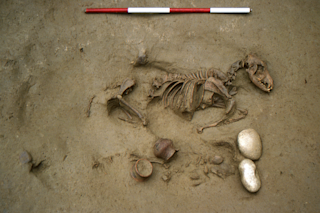It’s a well-known adage among archaeologists that the "deceased do not bury themselves." Burials are shared, meaningful moments where a community can represent and reinforce what it finds important. And for the Cenomani people, an ancient people from northern Italy, animals were important.
According to a new article in PLOS ONE, a number of Cenomani individuals were buried beside animals and animal parts between the third and first centuries B.C.E. Interred in the necropolis of Seminario Vescovile, in what is now Verona, the burials were varied in terms of the animals interred and the methods of interment, making them tricky for archaeologists to interpret.
Still, the authors of the article say that the burials were probably soaked in symbolism. Some potentially represented the sacrificial rites and rituals of the community, while others represented the close companionship between the buried and their burial companions.
Recently, a team of researchers reassessed a ...















